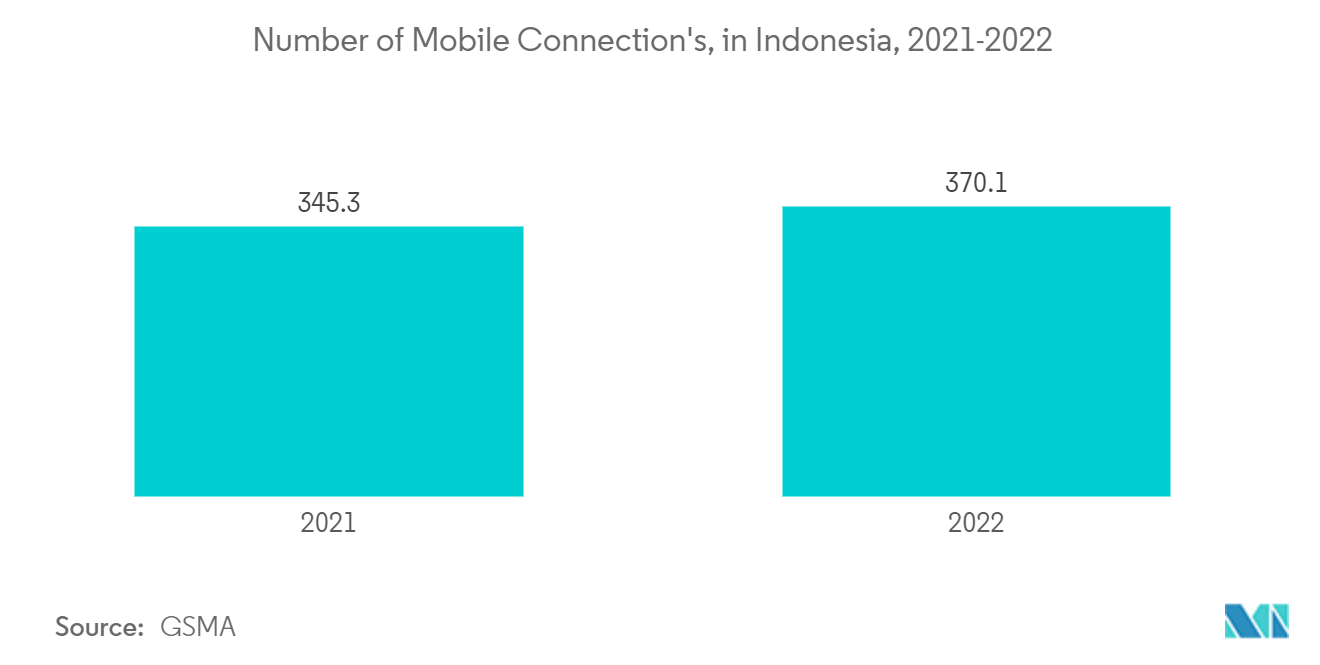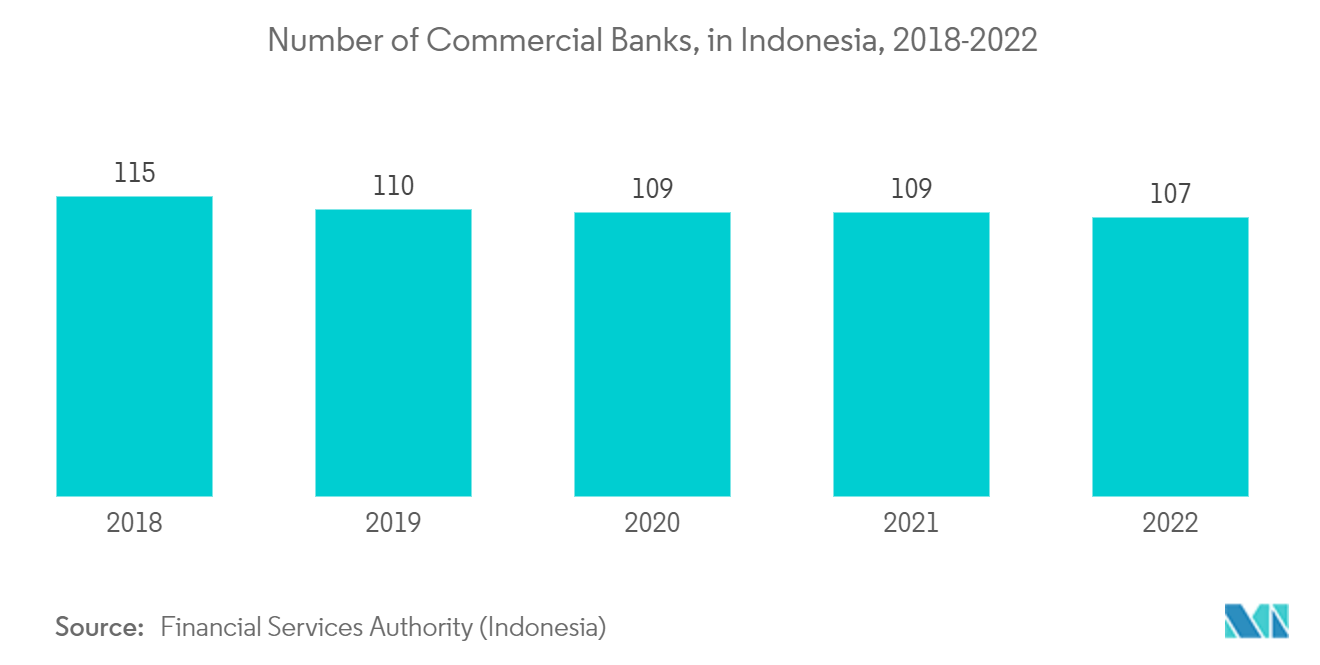Market Trends of Jakarta Data Center Industry
Tier 4 is Expected to Hold Significant Share of the Market
- The tier-IV certification is currently the highest classification among data center facilities. These data centers require huge capital compared to other tiered data centers and are usually present in developed economies. Jakarta is still a developing data center market with an internet penetration of about 50%. The low-tiered data centers in Jakarta more feasibly handle the amount of traffic generated. The companies have shown less interest in having facilities with tier IV status in the region.
- Major companies like Microsoft and Amazon, which operate massive data centers in other regions, have restricted their operations to lower-tiered data centers in Jakarta. Companies like NTT and DCI have shown interest in having tier IV facilities in the future. Still, significant investments and expansions have been more toward tier II and III data centers. Moreover, tier-IV providers have redundancies (2N+1) for every process and the data protection stream. No single outage or error can shut down the system and provide 99.9% uptime annually, the highest guaranteed uptime. The level IV infrastructure should have at least 96 hours of independent power to qualify in this tier. This power should not be connected to any outside source and should be entirely proprietary.
- This tier also ensures optimized efficiency. The servers are housed in the most physically advantageous locations. This drastically extends the life of the hardware. If temperature and humidity are kept consistent, one can gain great efficiency. Even the backups and dual power sources are treated like primaries. Also, the tier-IV data center can require up to 3 to 1 of the space required to facilitate the IT footprint. For tier IV, the kW cost component is USD 25,000/kW of the redundant UPS capacity for IT.
- Tier-IV is considered an enterprise-level service. Companies without international reach and consistently high web traffic do not usually require tier-IV facilities. Tier IV has As technological advancements, such as AI, IoT, and 5G, are leading the digital transformation, various industry sectors, such as government, finance, media, and manufacturing, are starting to demand advanced data centers with high reliability. By leveraging their years of expertise, only some prominent technological vendors in the region are launching services allowing end-users to manage data center operations better. For instance, PT DCI Indonesia (DCI) formally launched its fourth data center facility, JK5, in Cibitung, West Java, to support the cities' digital economy's long-term expansion, estimated to reach USD 130 billion by 2025. DCI is Southeast Asia's first tier-IV data center, providing dependable, integrated, well-managed cloud and carrier-neutral infrastructure services to many local and international customers. Its state-of-the-art campus in Cibitung, Bekasi, is only 40 kilometers from Jakarta's Central Business District.
- According to GSMA Intelligence, there were 370.1 million cellular mobile connections in Indonesia by the beginning of 2022. Mobile connections in Indonesia were comparable to 133.3% of the total population in January 2022. Between 2021 and 2022, the number of mobile connections in Indonesia increased by 13 million (+3.6 percent). Such a huge number of mobile users would drive the demand for the studied market.

BFSI is Expected to Drive the Market
- In the last three years, major local and international data center players have gradually entered the Jakarta Indonesian market, drawn by the country's socio-economic potential. Indonesia has the world's fourth-largest population and is the largest in Southeast Asia. A large proportion of tech-savvy youth and favorable demographics aid the growth of data centers across the country. According to Jones Lang LaSalle IP Inc., currently, approximately 73% of 270 million people in the country use the internet daily, making the country one of the largest online markets in the world. As a result, many digital services, such as e-commerce and financial, are emerging.
- Jakarta banking, financial services, and insurance sectors are rapidly changing. Banks and insurance companies must reinvent themselves due to the changing regulations, emerging technology, elevated client expectations, and the entry of disruptive competitors. The city is one of the most valuable untapped markets in APAC's digital finance sector. More than 50% of the country's population is currently unbanked, presenting an incredible opportunity for banks and fintech to adopt the technology and offer services, as the adoption of smart devices by the people is expected to grow day by day. The country offers a strong potential for market growth, owing to its vast young population and relatively low smartphone penetration. These factors are expected to drive the studied market in the forecast period.
- Similarly, in the fintech industry, online lending has been boosting the demand in the region. Thus, online banking is expected to become more popular in jakartawith each passing year, and it is expected to increase the demand for resilient, safe, cost-effective, and energy-efficient data center solutions. The majority of the banks in jakarta offer online banking services. Thus, for the financial service providers in the country, data center solutions are becoming a popular choice to extend the capacities of the existing data centers as they emerge as a backup setup for disaster management.
- Additionally, enabled by the increased adoption of mobile technology, the future of digital payments across the region looks optimistic, with the number of digital payment methods expected to rise in the near term. For instance, in January 2022, Bank Indonesia (BI), the country's central bank, developed BI-FAST, the country's first real-time payment infrastructure, with the help of ACI Worldwide, a developer of real-time digital payment software. BI-FAST is an essential component of Indonesia's continuing digital transformation project and a key component of its payment system blueprint, IPS 2025. IPS 2025 intends to improve the country's payment infrastructure, integrate the country's digital economy and finance sector, and answer the public demand for a rapid, easy, safe, economical, and dependable payment system. Such developments in the banking sector will increase the demand for data centers in the region.
- According to Financial Services Authority (Indonesia), as of January 2022, 107 different commercial banks were located in Indonesia. A huge number of banks in the region would create an opportunity for the rise in online transactions and a lot of data regarding KYC, and this would push the various banks in the region to adopt the services to the data center and allow the international firms to establish new data centers in the city.

